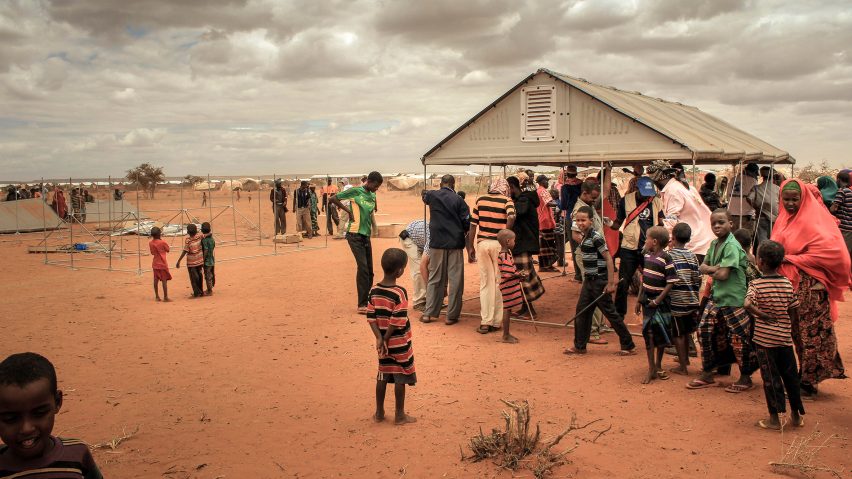
IKEA Foundation CEO says adapting refugee shelter is "like playing with Lego"
Better Shelter is the latest IKEA product to be hacked, according to the head of the company's charitable foundation, who told Dezeen the modular refugee cabin is now being used to create doctors' surgeries and schools.
The IKEA Foundation launched its flat-pack emergency shelter back in 2013 to offer an alternative to the tents often used to house refugees and displaced people, of which there are now more than 65 million worldwide.
Thousands of Better Shelter cabins have since been deployed globally, with many being used for functions other than housing, or grouped together to create larger structures.
"It is a real opportunity," said Per Heggenes, who has been IKEA Foundation CEO since 2009.
"Because they are modularised, they offer a way of creating small health stations, as doctors did in Nepal, or creating temporary schools," he told Dezeen, following a presentation for the Oslo Architecture Triennale 2016.
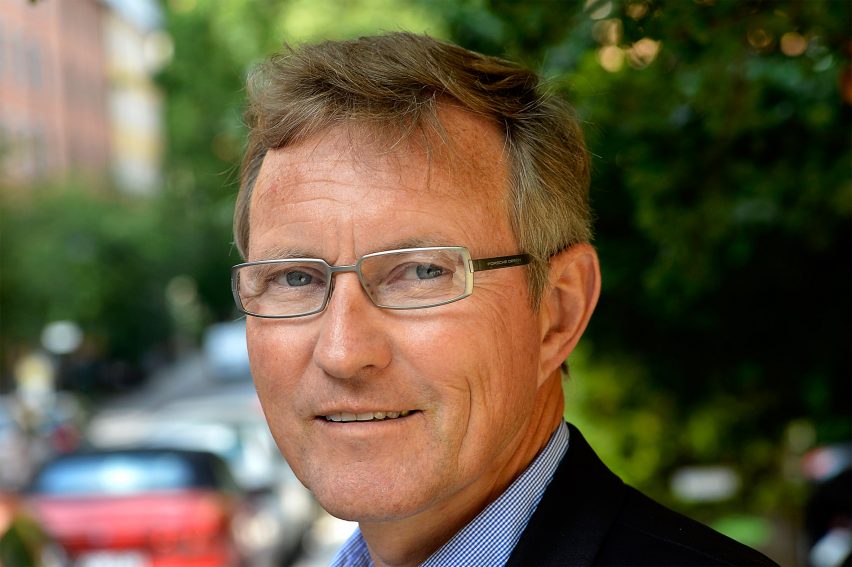
The idea follows the same principles as the IKEA Hacking movement – an internet phenomenon where customers demonstrate ways of customising furniture products to suit specific functions, or to make them more personal.
Heggenes said that, in a refugee camp in Greece, he saw the steel-framed shelter used to create a women's tea salon, in keeping with the Muslim tradition of gender segregation in social settings.
"It's like playing with Lego almost – you can put it together in different ways," he said.
"But a family could theoretically take it apart and take it home," he added. "They could then rebuild using local materials, and just use this as a framework."
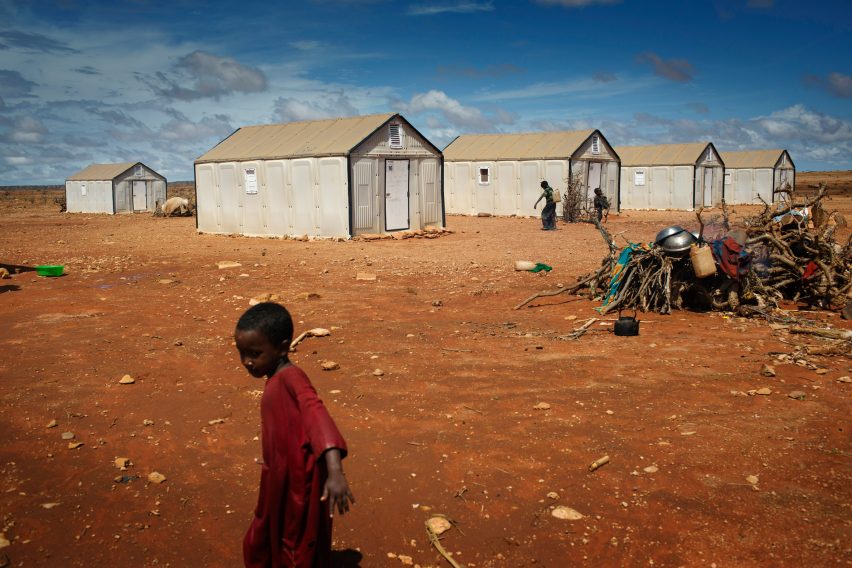
Better Shelter was a radical venture for the IKEA Foundation, which previously had only worked on traditional charity work.
An obvious benefit was the expertise offered by IKEA engineers, on everything from materials and suppliers to packaging and logistics. They even advised on recreating IKEA's famous instruction manuals.
The company is a separate, for-profit enterprise with an ongoing development programme, which has allowed it to create different packages for various climates and environments. "There's no one-size-fits-all," said Heggenes.
But in essence, the product is a 17.5-square-metre module that can be assembled without tools in four hours. It has an expected lifespan of three years and can accommodate five people.
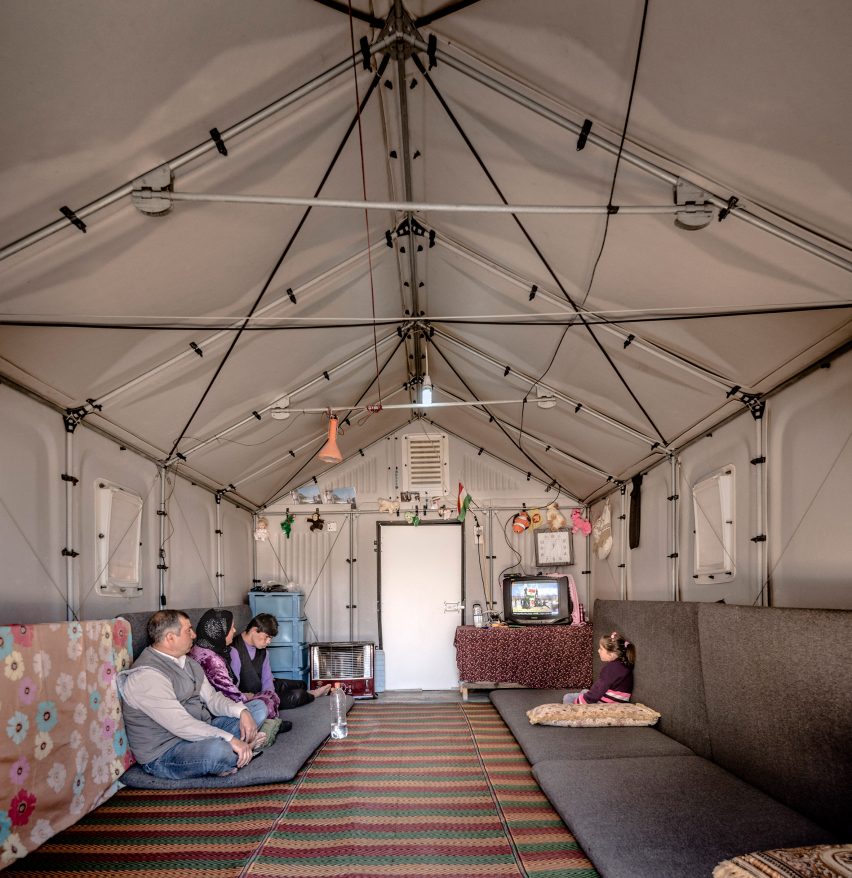
Heggenes insisted that the shelters were never intended as long-term homes for refugees, who on average live in camps for 17 years. The aim, he said, was to provide a more secure and long-lasting alternative to tents – and one that humanitarian organisations would be willing to invest in.
"It's a limited market – we're not doing iPhones, we're doing shelters that will be bought by the Red Cross or UNHCR," he said.
"These companies not only need to embrace it, but they also need to buy it at a certain volume so that we can keep the business going."
Read the full interview with Per Heggenes:
Amy Frearson: How did the Better Shelter project come about?
Per Heggenes: It was started by a small Swedish foundation consisting of engineers. They had this idea of creating a shelter that provides a better quality of living for displaced people – a better quality of living than a tent. Living in a tent for weeks or months is not a great thing, but it is what a lot of refugees and displaced people have to do. So this group came to me and asked if the IKEA Foundation would be interested in funding it.
I took the group to the United Nations High Commissioner for Refugees (UNHCR) because they know a lot about what works and what doesn't, and when you develop a product like this you want to develop it with the people who will actually use it. After all, UNHCR was one of the few organisations that could potentially buy thousands of these, and we wanted to them to tell us what the solution needed in order for them to consider it.
And then I thought, instead of just doing this project in a vacuum, we should bring in the right people – in this case the displaced people and refugees – into the process, then ensure that we make a very significant investment, to give it the best possible chance of succeeding.
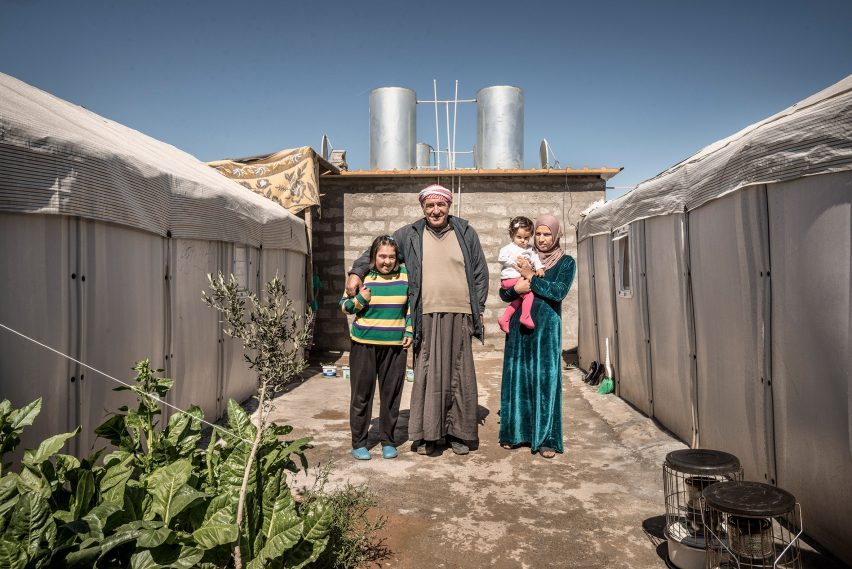
Amy Frearson: What happened next?
Per Heggenes: Then, of course, this team went through lots of different variations of solutions. Because specifications are really tough in the sense that it can't cost more than this, it can't weigh more than this, and it needs to be packed in a way that it can be easily dispatched – it is a solution that will predominantly be used in emergency situations, so you need to be able to ship it out quickly. And then of course you come to all the natural conditions in which this shipment needs to operate. It's often very harsh conditions – desert conditions, scorching sun, dust storms. You need to have material that can actually withstand these kinds of conditions.
The team went through lots of different versions of sheltering materials until they came up with the idea of using a polypropylene-based combination of different chemicals that are extruded, and then turned into wall panels and roof panels. The chemical combination means that this material can withstand harsh conditions. It's fire-retardant and it will probably last for many years, depending on the condition of maintenance of course. They then went through many different versions of this composite until they found something that worked.
After we had tested everything in a laboratory – you can test for wind, water, weight and all of these things, but you can't test whether people actually like the product or whether they are actually able to put it together – we took it to the field, in Ethiopia and in Iraq. We tested it with displaced people for six months and learnt, of course, a lot about what worked, what didn't work and how we would improve certain things.
There's no one-size-fits-all of course
One of the key things about the solution we came up with was it didn't require any tools, so it could be put together by people using a construction manual. They could do it themselves in a few hours, which was important.
So the project went through five years of development, which included the design phase, the trial phase, the prototype phase, then the improvement of the prototype, up until the point where we were ready to say the product had commercial value.
Then we started looking for a manufacturer. It turned out that the companies that could potentially manufacture it were companies who also sold tents, and were much keener to sell tents.
So we ended up doing it another way. We saw the potential for this modularised construction to be further developed and used in different ways – on cold-climate packages and hot-climate packages, because shelters are required in such different natural conditions. There's no one-size-fits-all of course.
So we set up a social enterprise, which gave us the opportunity to continue to develop the shelter and, at the same time, ensure that it was manufactured for as low a cost as possible, and made available to as many people are possible. That was the whole purpose of the exercise.
Amy Frearson: Had the IKEA Foundation ever worked on a project like this before, or was this very radical for you?
Per Heggenes: This was radical. What we usually do is fund programmes around the world to address children's health and education – the focus is all about children. So this was very different.
But we do take on risky projects, because we think that the humanitarian role and the development role is in need of innovation. Innovation means risk and it means that you have to be able to fail. As a foundation we can take that risk and do it responsibly. Therefore we are looking for programmes and projects where we can take a risk, where we see that the risk is high but the potential upside is huge if we succeed.
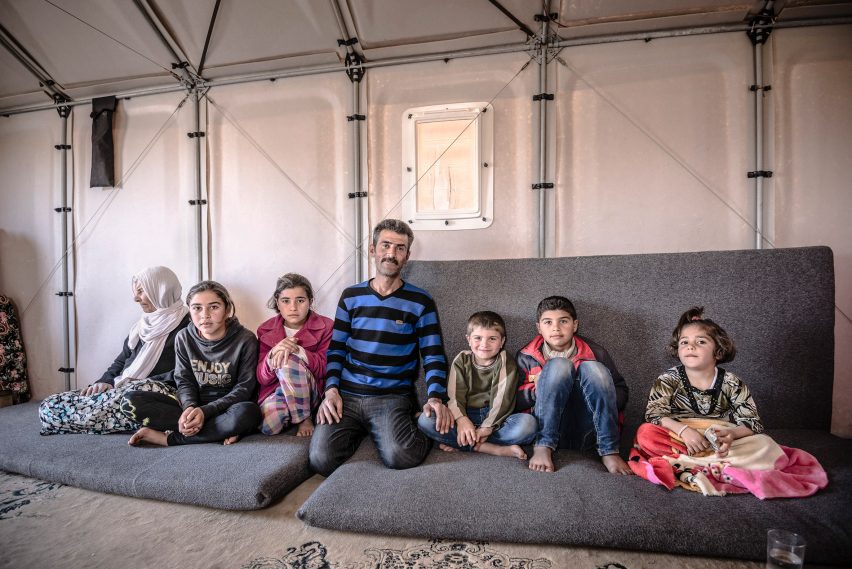
Amy Frearson: And I suppose the benefit of this project was it was able to tap into the expertise that IKEA already had and make use of it?
Per Heggenes: Yes. Although the project has not been done by the company itself, we've had a lot of support from the company. IKEA engineers helped us to find the right materials and suppliers, to do the right thing in packaging and logistics, and to create instruction manuals of course!
So the company helped out a lot with time and people, but it is not a company project. It is a project financed by the foundation but carried out by outside organisations working together. Better Shelter is the organisation that we established as a social enterprise. It's a for-profit enterprise owned by a separate, not-for-profit foundation, which is separate from IKEA and separate from the IKEA Foundation. It's established by us and we provide the necessary capital to make it work. But it doesn't belong to us.
It's probably the only not-for-profit venture that provides non-food items to the humanitarian sector. Everyone involved in the humanitarian sector are for-profit companies. And there is nothing wrong with that, because everyone needs to make a living. But in this case, we have the benefit and the luxury of setting up a social enterprise, so we can keep the prices as low as possible and ensure that as many people as possible have the benefit of the product.
It's not intended to be permanent, it's a temporary solution
Amy Frearson: In your presentation you said that the average time most people spend in a refugee camp is 17 years, which I found shocking. Are the Better Shelter products intended to house people for this long?
Per Heggenes: No, we don't guarantee it to last for 17 years. The purpose of the shelter is not to become a permanent living space for a family, it's a temporary living space. The problem is that most refugee situations are protracted, and a temporary living space tends to be used for a very long time.
We felt that providing a temporary living space, which offers much better safety and quality for people, would at the same time offer a better economy for an organisation like UNHCR. Most tents only last for six months before they have to be replaced. So if you have people are stuck in these temporary situations for years, then UNHCR has to constantly supply new tents, which is very expensive. The idea here was to supply something that's more durable, that can last longer, that's better quality, but also a better economy for agencies that need to pay for it.
Amy Frearson: So in your mind it's very much a replacement for tents, rather than a substitute for more regionally appropriate architecture in disaster areas or war zones?
Per Heggenes: Yes absolutely. It's not intended to be permanent, it's a temporary solution. But, as it's assigned the way it is, a family could theoretically take it apart and take it home. If they can go home – if a conflict is over and they have the opportunity to return to their home country, which of course most refugees would like to do – then they can take the whole lightweight steel construction home. They could then rebuild using local materials, and just use this as a framework.
The shelters are also being used for different purposes. It is a real opportunity, I think. Because they are modularised, they offer a way of creating small health stations, as doctors did in Nepal, or creating temporary schools. In one of the camps in Greece they developed a tea salon for women by putting several shelters together, because in a Muslim community you have to have separate tea salons for men and women. So it has been interesting to see people get very creative with this product. It's like playing with Lego almost – you can put it together in different ways.
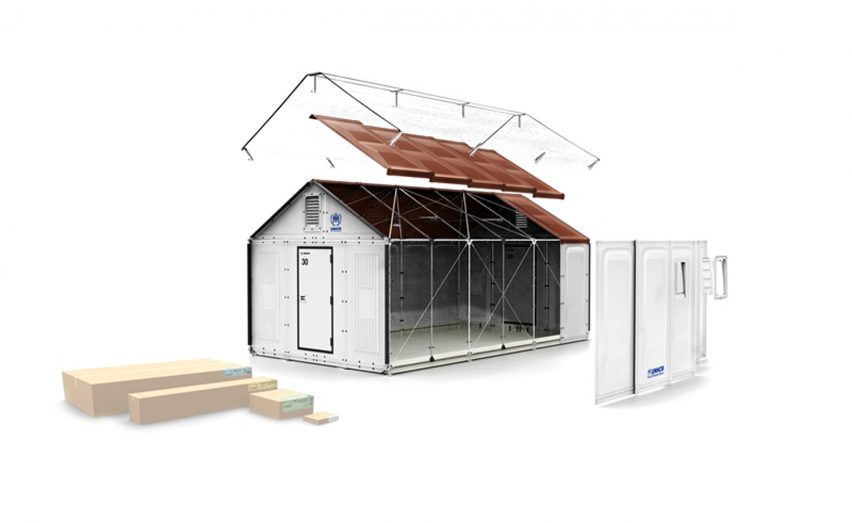
Amy Frearson: It seems to follow with the IKEA stream of thinking – that products can be hacked to serve many different purposes.
Per Heggenes: That's become a big movement hasn't it? People hacking IKEA products?
Amy Frearson: Yes exactly. It seems like these shelters have been devised to offer the same potential.
Per Heggenes: It is a huge advantage that it is modularised, because you can put it together however you like. And there are some features that are extremely important to these people, like safety – these people went through hell to get to where they are, and being able to go inside, lock a door and feel safe is of paramount important to them. And that's not the case with the tent, for example. In that sense, we've made a couple of good steps in the right direction.
As I said, the cool thing about a foundation like ours is that can take a risk on a project like this, a risk that a normal private-sector company would probably not take because the potential is not large enough for them financially. It's a limited market – we're not doing iPhones, we're doing shelters that will be bought by the Red Cross, UNHCR or IOM. These companies not only need to embrace it, but they also need to buy it at a certain volume so that we can keep the business going.
It is a huge advantage that it is modularised, because you can put it together however you like
Amy Frearson: The project seems to have been well received internationally. But have you had any backlash or criticism to respond to?
Per Heggenes: I can't think of any user who hasn't said that this solution is great, that they love it, and that they would prefer to have it rather than a tent.
But we do face one... let me call it a challenge. We're providing a new solution to the world, that requires the world to start thinking about temporary shelters differently. You can't just put this out there, flick a switch, and suddenly everyone starts buying these shelters instead of tents. They know what it takes to deploy a tent, they know what it takes to erect a tent. They don't know what this product is. So they are naturally a little scared of something new and different.
It requires quite a significant marketing and development process to get people to embrace a new solution. It is easier to embrace in theory, but when you are in the field – if you're a camp manager, for example – and you have thousands of refugees crossing the border every day, you want to be able to erect as many temporary shelters as possible for people, and you want to feel comfortable with the solution. That's something that we didn't think of initially. There is a sales process, a marketing process and training process required in order to get people to embrace a totally different solution.